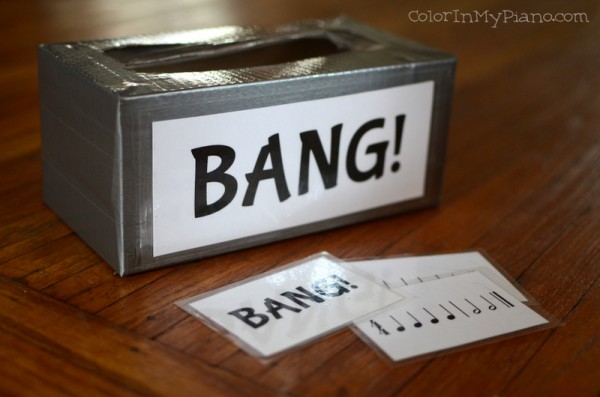There are quite a few places you can download and print free music note-naming flashcards. Anne Crosby’s website and Susan Paradis’ website come to mind, for example. However, I recently realized that I wanted a set of jumbo-sized cards, to use with my Piano Readiness classes.

I can hold up these jumbo-sized cards during class and my young students can still see the note on the staff. Young beginners or students with disabilities may also benefit from having jumbo-sized flashcards.
I color-coded my flashcards according to the range of notes. I printed the Middle C position notes on green paper, the next few notes up to Treble C and down to Bass C on yellow paper, and the next notes up to High C and Low C (ledger lines) on blue paper.
You can download this FREE pdf on the Printables > Other Resources page, under “Jumbo Note-Naming Flashcards.”
 Jumbo Note-Naming Flashcards (459.7 KiB, 50,136 hits)
Jumbo Note-Naming Flashcards (459.7 KiB, 50,136 hits)
Yesterday, I asked for your favorite game ideas involving note-naming flashcards. I can’t wait to try out some of your ideas — keep ’em coming!




 Last week, we had a
Last week, we had a 




 Just added to the
Just added to the 
 Just added to the
Just added to the